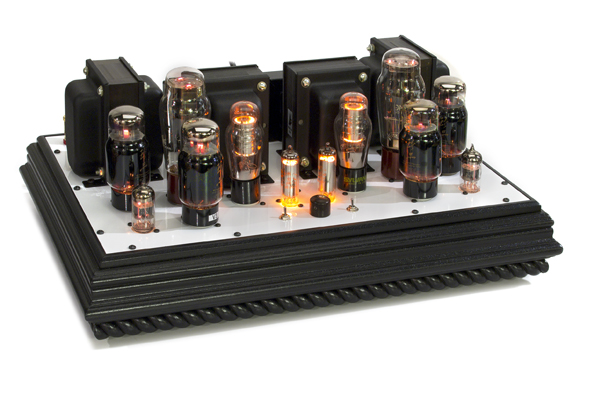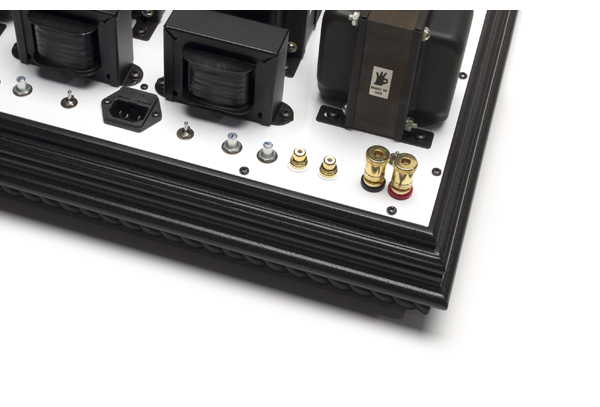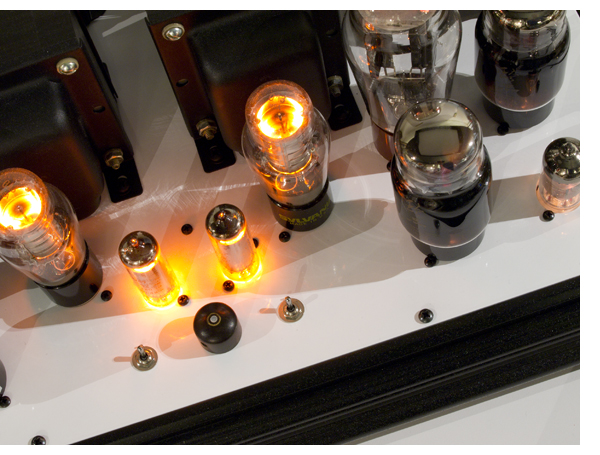Decware Zen Torii Mk.3 Amplifier Transitional Gateway
By Jeff Dorgay Hyundai covers its engines for 100,000 miles. Bryston guarantees its amplifiers for 30 years. Decware guarantees its amplifiers for life. Any way you look at it, offering long warranties takes guts. It also means you better make a damn good product, or you’re going to go broke servicing warranty repairs.
Hyundai covers its engines for 100,000 miles. Bryston guarantees its amplifiers for 30 years. Decware guarantees its amplifiers for life. Any way you look at it, offering long warranties takes guts. It also means you better make a damn good product, or you’re going to go broke servicing warranty repairs.
The Decware Zen Torii Mk.3 is a damn good amplifier.
While I hate to use the “b” word (best), the Torii is my favorite power amplifier based on the EL-34 tube, and that’s saying a lot. I’ve always had a major affection for such amplifiers, which possess many characteristics of great single-ended triode amplifiers and yet, have more power and control than an SET can muster.
Think of the Torii as an SET with benefits—namely, increased bass control and dynamics. Unless you have extraordinarily efficient speakers, a few watts per channel just won’t rock your world. But 25 watts per channel dramatically changes the game, and is more than enough to power the Verity Audio Amadis speakers (93db/1-watt sensitivity) to a sufficiently high level on music of any kind. The Mk.2 does a fine job with the Verity Rienzis (87db/1 watt) and B&W 802 Diamonds (90db/1 watt). Still, the Amadis’ added sensitivity is just what’s needed to push the envelope.
Decware owner and chief engineer Steve Deckert claims his amplifier is “the last one you’ll ever want” and should only be used with a preamplifier if you happen to have a world-class unit at your disposal. Fortunately, I have two: An ARC REF 5 (vacuum tubes) and Burmester 011 (solid-state), each reference components, and both excellent matches for the Torii. At the end of the day, with the Verity speakers, I was willing to relinquish the last bit of the ARC preamp’s front-to-back-image depth for the additional bass grip and slam the Burmester provides. With the GamuT S9s, the ARC has the edge.
An optional $150 stepped attenuator on the Torii makes it easy to keep the preamplifiers used within their respective sweet spot, balancing dynamics and the lowest noise floor in the presentation. While the sound remains excellent when using the dCS Paganini straight into the Torii, via the Paganini’s digital volume control, I feel that a killer linestage brings maximum dynamics to the table.
Deckert warned me that the Torii would require a long break-in period. Yet it sounded good right out of its supplied Pelican Case—another nice option, and one that certainly beats a cheesy cardboard box. Moreover, it keeps improving over time and, if I had to guess even after 700 hours of listening time, still sounds as if it is advancing. Where many amplifiers sound grainy and two-dimensional after only a few hours on the clock, the Torii’s tonal character just keeps ameliorating as the hours rack up.
My review sample has the optional V-Cap upgrade, which adds $500 to the window sticker. It’s well worth the price. A custom wood base is also available, meaning that a completely tweaked-out version fetches about $3,600. Each Torii is hand-built by one person and given plenty of attention from start to finish, not unlike a master engine constructed at Ferrari or Aston Martin. Such care becomes obvious the minute you take your Torii out of the carton; it’s truly a product to cherish. (Decware products are all built to order and only available factory-direct.)
The only aspect that might drive you nuts with the Torii? The amount of customization you can bring to its sound by swapping various tubes. This amplifier is what a tennis ball is to a Jack Russell terrier; you can chase it forever and you’ll collapse in exhaustion by the time you’re done. If that’s your idea of fun, you’ll never get bored with the Torii. While every tube makes a difference, the output tubes seemingly make the least amount of difference. I tried several combinations, but the input tubes and voltage regulators provide more sonic variance than swapping output tubes.
Deckert attributes this characteristic to his “Hazen grid modification” that involves substituting a non-polarized film capacitor for the piece of wire that normally connects between the suppressor grid and cathode in the output stage. Deckert also touts another benefit of his modification: The basic push-pull output stage makes it less sensitive to tube type. I must concur. This is great news—especially considering that the price of vintage NOS EL-34 tubes can soar as high as $300 each.
The Torii comes with the most informative owners manual I’ve ever seen. Rather than bore you with paragraphs of tube rolling escapades, click here for the manual: http://www.decware.com/newsite/TORIIMK3Manual.pdf
And the adjustments don’t stop with the tubes. You can choose one of two bias settings, and there is a bass and treble control. Not traditional tone controls, mind you, but two more ways to optimize the speaker/amplifier interface. The treble control rolls off the high-frequency response of the amplifier, but simply shunts to ground so it is not in the signal path. Deckert says the “bass control” actually impacts how the amplifier interacts with the speakers, and that there is no fixed “flat” position for these controls. Hence, they must be adjusted with each speaker. Finally, a 4/8-ohm impedance switch is present and, as with any tube amplifier with multiple output taps, should also be sampled, as often times the best match is not what you might think.
Those who stay focused and have the Zen-like patience to settle on a combination (or two) will be rewarded with a presentation that transports them to a special place. Even if you stick with the supplied tubes, the bass, treble, bias, and impedance controls are worth five minutes of your time. Consider: the Torii might actually save you money if you’ve got a pair of speakers that are too forward or a touch boomy. There’s a good chance that making small adjustments will dial in a speaker you may have considered selling. More money for concert tickets never came easier.
 Unlike Any Other EL-34 Amplifier
Unlike Any Other EL-34 Amplifier
Whereas a Shindo or vintage Marantz amplifier embellishes the sound in a way in which the music tends to sound warm, romantic, and even a bit slow regarding pace and timing (not that this is always a bad thing for many digital and other less-than-stellar recordings), ultimately laying resolution on a sacrificial altar, the Torii strikes a perfect balance of rendering additional tonal richness without altering the music’s fundamental character.
Via the Torii, Moraine’s “Uncle Tang’s Cabinet of Dr. Caligari” from Metamorphic Rock is an absolute prog freak-out, with layer upon layer of maniacal synthesizers and overdubbed guitars all kept in order with larger-than-life drums. Whatever your taste in complex tunes—be it prog, metal, or full-scale orchestral music—you will find intoxicating the Torii’s ability to maintain musical pace.
Without fail, the Torii consistently digs deep into recordings, uncovering morsels of information you may have never heard before. Montrose’s “Rock Candy” is a classic example of a slightly flat recording that comes alive with this amplifier. Usually devoid of any soundstage depth, drums and guitar became invigorated, assuming their own space while lead singer Sam Hagar’s voice remains front and center. And a phenomenal recording like The Band’s Music From Big Pink takes on a life of its own, feeling as if it’s mixed in surround.
The trick the Torii plays better than most vacuum-tube amplifiers stems from its ability to achieve an astonishing balance between tonal richness and tonal purity. And it does so without sliding down the slippery slope of coloration and euphonic distortion. Acoustic instruments retain correct timbre, complete with a fine-grained decay that seems to fade out forever.
Moreover, while most pure tube amplifiers exhibit tube rush when no signal is present, the Torii has none. Chalk it up to the unique utilization of the voltage regulator tubes. The Torii uses them in series, working as active filters rather than in parallel to regulate voltage. This approach also puts almost no stress on the tubes. Unsurprisingly, Deckert claims the latter should practically last the life of the amplifier. While I still notice modest improvements when plugging in to my Running Springs Maxim power line conditioner, the Torii exhibits less improvement than any other vacuum-tube amplifier I’ve plugged into the Maxim. It’s another test that further confirms Deckert’s claims.
Sure. Watts are watts. But thanks to its robust power supply and proprietary output transformers, the Torii has an abundance of headroom and very gently extends past its peak power output, with barely a hint of clipping. Even when playing the heaviest metal, the amplifier always feels bigger than its modest power rating suggests.
All of this adds up to sound reproduction that is rare with most amplifiers, no matter the price, and a practical miracle at $3,600. Granted, 25 watts per channel won’t be optimum for every speaker and room combination. But within this realm, I can’t think of a more enjoyable amplifier than the Decware Zen Torii Mk.2. I bought the review sample and plan on keeping it long enough to see if it will ever break.
One last word to the wise: Those wanting to put a Torii under a Christmas tree should get on the phone now. Orders are currently subject to a 10 week wait. Deckert told me that they have a backlog of 90 to build right now, and hopefully by spring they will be back to the standard 4-6 week wait.
Decware Zen Torii Mk. 3
MSRP: $2,945-$3,700 (depending on options)
Peripherals
| Analog Source | AVID Acutus Reference SP/SME V/Koetsu Urushi Blue |
| Digital Source | dCS Paganini stack Wadia 581i Sooloos Control 15 |
| Preamplifiers | ARC REF 5 Burmester 011 |
| Speakers | B&W 802 Diamonds Verity Rienzi Verity Amadis GamuT S9 MartinLogan ElectroMotion ESL |
| Cable | Cardas Clear |
| Power | Running Springs Maxim PLC Running Springs Mongoose cords |



